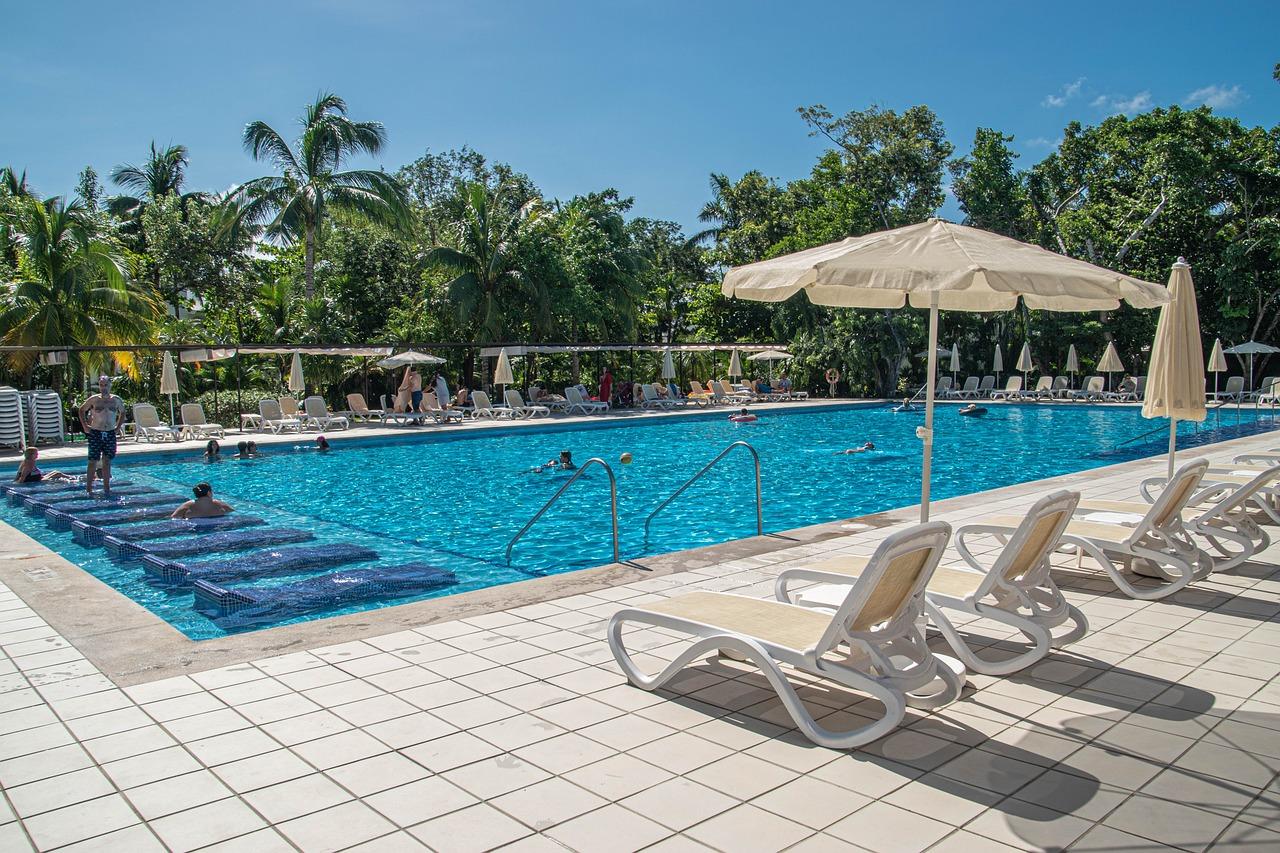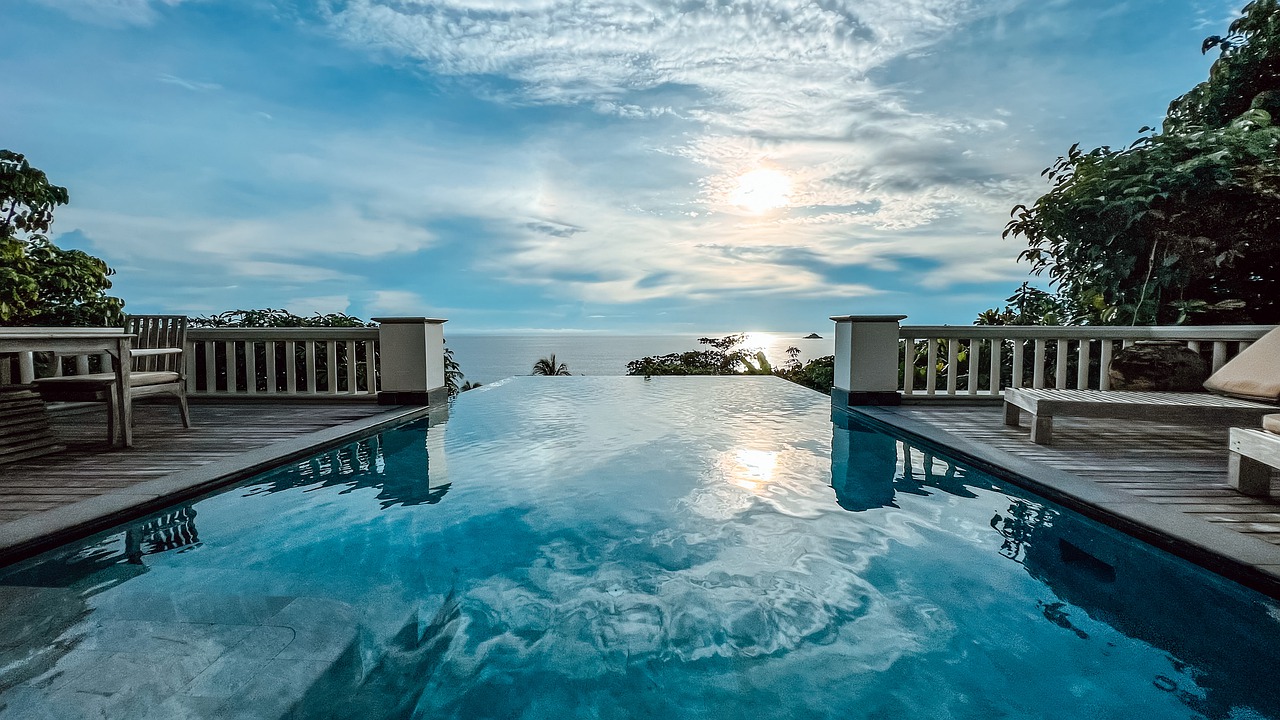How should I prepare a pool for the swimming season?

Swimming pools are the best way to relax and have some fun on a hot summer day. Water is a perfect medium for growing bacteria, algae, and other harmful substances. You need to regularly take care of your pool, especially after the cold season. Before discussing the cleaning steps, you should make sure that you have all the required pool equipment and tools for proper and quick maintenance throughout the whole swimming season; especially, we recommend having a pool pump, filter, and skimmer.
For cleaning pool surfaces, you should have a brush or an automatic pool cleaner; brushes can connect to the pool pump via a hose for effective pick up from the pool floor. To remove large debris from the water surface, you should have a net with a telescopic pole.
We should admit that if you have a framed pool or an inflatable pool, your preparation for the pool season is much easier – you need to assemble the pool and fill it with water. It is not recommended to keep above-ground framed and inflatable pools for the whole year; this may cause the rapture of PVC material. Before the new season, you need to quickly clean the PVC material and add some chemicals for proper pH and chlorine balance.
For stationary in-ground and above-ground pools, please go through the steps of pool preparation described below. The sequence of the points can be changed a little bit (4-7), but this order is provided to prevent damage to pool equipment. The automatic pool cleaners are forbidden to use if you just shocked the pool; you need to balance the water to a safe pH (7.2-7.6). Otherwise, you may damage the PVC and resin parts, which are not covered by its warranty.
Remove a pool cover and collect large debris
For correct storage and protection of the pool surfaces from unwanted dirt and debris, we recommend using a pool cover for winter storage. You need to remove it accordingly at the beginning of the new season. With a brush and a pole, please remove all accumulated debris, dirt, and water that may still be in the pool. Store the cover in a dry place for next usage at the end of the swimming season.
Check the pool equipment
For all pools, it is recommended to have a pump, a filter, and a skimmer. If you do not have the pump yet, we recommend checking Intex pool pumps and corresponding accessories, which are some of the best on the market. If you already have it, please clean and replace, if necessary, the filter (replace the cartridge or change the sand, add a new D.E.), and replace all O-rings, flanges, and gauges. Do not forget to remove all winterization plugs and install drains before the test run. Use Teflon tape in all connection points. The skimmer should also be checked. If any of the parts are damaged, please replace them.
Fill the pool with fresh water

The swimming pool should not be stored in winter with water as it may cause a freeze of internal piping and pool equipment. Open all valves and drains into standard position. So, fill the pool with fresh water. If some debris is floating on the surface, please remove it with the net. At this stage, you need to check the pool for leaks. Be sure that the water level is constant for 1-2 hours and does not decrease after you have finished filling the pool.
Test and balance water pH level
Before running pool equipment, you need to test with test strips or reagent kits water pH level and total alkalinity – the safe level is about 7.2-7.8, and total alkalinity is 80-120 pp. If your pool composition is not fine, please adjust it using chemical solutions for pools available on the market (calcium or sodium chloride shock, soda ash, calcium chloride, bicarbonate sodium, and many more).
Test and start your pool pump and filter
Based on your pump and filter instructions, perform a test run. You have to be sure that there is no air in the plumbing lines, that all valves are open, that there is no damage, and that all parts are in operation order. After a successful test run, you need to run a pool pump with a filter for several days to ensure the water is safe from any particles and harmful substances; it prevents water stagnation and the creation of algae. Moreover, the pool pump and filter help distribute the chemical to the whole pool volume. The size of the pool pump and filter should be chosen correctly for proper water circulation.
Shock the water

You also need to shock your water in the season opening; you need to add a high dose of chlorine acid into the pool to kill all bacteria and algae and prevent their further growth. You can use powder acid, solutions, tablets, or granules. Your pump should work during the shock, but you need to control the chlorine level after some time and reduce it (as stated in the instructions). There are special algaecide solutions for removing and controlling the growth of algae. If you have tiny dirt and debris, you can use water clarifies, which, within 2-3 days, will make your pool sparkling clean. Be sure that you keep the required time and then balance the water level up to the safe level (see point 4). That water should circulate for 8 hours, at least after you finish the shock procedure before the water level becomes safe for swimming.
Clean the pool surfaces
If you have automatic pool cleaners, this is the right time to push them for work. You can connect them with the pressure or suction line of the pump (depending on your pool type) or use the electricity (if you have a robotic pool cleaner). For pressure-side pool cleaners, a special booster might be required. You need to use a manual brush if you do not have these automatic devices. In this step, you should remove all dirt and debris after shock and water filling from the walls, floor, and waterline. Automatic pool cleaners significantly reduce cleaning time. Normally, the cleaning cycle for small and medium pools is about 2 hours, and they do not need your attention during this time.
Set pool equipment into standard working condition
After you have performed all the steps, you need to set the pump speed according to your water pool capacity (GPH); it should work constantly or several times per day. You can start using a water heater, chlorinator, or any other saltwater system at this stage. Saltwater systems sanitize the water and leave the water free from chlorine odor. The water is softer and gentler for skin, eyes, and clothes. Your filter and pump should be ready for work for a couple of weeks before the next check. You need to run the pump for at least 4-8 hours daily. If necessary, add D.E. or Sand (depending on your filter type). Reattach the deck equipment like ladders, steps, and handrails. Remove large debris from the skimmer.
Conclusion
The pool preparation for the new swim season is not easy; it includes several steps, all of which are essential for healthy and safe relaxation afterward. If you complete all these steps, your pool is ready! The whole process takes 2-3 days at least, and if you use tap water for filling, the water should warm to a convenient level. If you have green or brown water, you need to use more time to prepare the pool for the season. That means you need to use more chemical solutions and clean the pool with automatic or manual cleaners with ultra-fine filters; more water circulation should be performed through the pool filter. Please perform all electrical and chemical procedures according to the instructions. If you have problems with wiring, contact the professional.
After that, you need to monitor the water quality regularly: check the pH level, change filters in time, and clean walls, floors, and waterlines. The pool pump and filter should circulate the water in the pool at least 2-3 times per day if you use the pool regularly. If you swim only on the weekends, you can’t leave the pool unattended as well. Otherwise, you should perform such pool preparation as described every time. It is much easier to maintain a constant level of chlorine than to shock the pool and balance the water’s pH level.
